If you know me, you might think it’s odd that I’m posting a blog all about the ketogenic diet. It’s no secret that I’m a big fan of a macro-balanced, higher-carb approach when it comes to properly fueling your body. Especially for premenopausal women, and women who train with any level of intensity.
But, there’s no denying the fact that the ketogenic diet is extremely popular these days. And instead of just turning a blind eye to anyone who thinks this way of eating might be best for them, I wanted to provide you with a resource to help you make that decision.
My “Fed and Fearless” mindset around food, nutrition, and fitness is one that encourages women to make the right choices for their bodies, no matter what.
And if you think the right choice for you is a high-fat, low-carb diet, I want to be there to support you in making that decision. Because there’s a possibility a keto diet might well be your best choice for this stage of your life!
In this post, I’m going to teach you all you need to know about ketosis and a ketogenic diet (“keto”).
I’ll share scientific facts about what happens to your body in ketosis, plus tips on how to know if producing ketones might be good for your health situation. You’ll find only real information about this trendy diet – no hype here!
And my hope is that once you’re armed with all of the information about a ketogenic diet, you’ll be able to make the right decision for YOUR body. No matter what any weight-loss guru or nutrition expert says.
So, if you’re ready to learn everything you wanted to know about ketosis, let’s go!
The Science Behind Ketosis
Glucose as Fuel
Before we get into the nitty-gritty details about ketosis, let’s go over a quick summary of how a body that’s fueled the traditional way works. This way we can easily see the differences in how a body is fueled when in ketosis.
Traditionally, the body uses the carbohydrates we eat, in the form of glucose, as fuel for its cells.
Glucose is absorbed in the stomach and/or small intestine and is then released into the bloodstream. Once in the bloodstream, glucose is either immediately used for energy, or is stored in the body for later use.
Our bodies use the hormone insulin to facilitate the storage of glucose from the bloodstream, as glycogen, in the liver and muscles.
This is why, in the case of diabetes, blood glucose can stay elevated past what is normally expected due to the inhibited insulin response.
When the body requires extra energy it isn’t getting from immediately available glucose in the blood, glycogen stores in the liver and muscles are tapped into as necessary. Examples of this would be situations like during a strenuous workout, or the fasting period overnight.

Ketones as Fuel
In order to properly understand ketosis and how it works in the body, we’re going to get a little science-y. But bear with me, having a good understanding of what is actually going on in a body that’s in ketosis will give you a strong backbone of knowledge to determine if ketosis is right for you!
Ketosis, by definition, is a metabolic state that is characterized by increased levels of ketone bodies. This increase in ketone bodies (or ketones) is most commonly a consequence of a diet very low in carbohydrates.
Ketones are produced by the liver from fatty acids. The liver will start producing these organic compounds as fuel for the body when its traditional source of fuel, glucose, has been depleted.
Glucose is depleted in the body when there is no available glucose in the bloodstream AND the body’s stores of glycogen have been used up.
So, in ketosis, the body has run out of glucose and stored glycogen and needs to find another source for fuel. Therefore it must adapt and produce ketones for energy.
You might think this would be a difficult transition for your body to make. And it can be. But most cells in the body actually contain mitochondria that have the ability to burn ketones for energy.
Which is great news for people who are producing ketones! The majority of their cells will keep running smoothly whether they are using glucose or ketones for fuel.
Why Ketosis isn’t the Norm
From what we’ve learned so far, ketosis sounds like it’s the preferred energy-burning state for our bodies. But, one reason it’s not is that not every cell in our body can use ketones for fuel.
Red blood cells and neurons of the central nervous system (the brain) cannot burn ketones for energy and must rely on glucose to keep functioning.
In ketosis, the body’s glucose stores have been used up. So glucose must be created to fuel the brain and red blood cells. This occurs by a process known as gluconeogenesis – the creation of new glucose.
A healthy body, even one that is not in ketosis or eating a ketogenic diet, is constantly producing ketones, but only at a low rate.
So, the difference in ketosis is that the body has used up its glucose stores, and is now producing enough ketones to have switched over to using these compounds for energy.
A body is considered to be in ketosis when the rate of ketone production exceeds the amount needed for energy.
Ketones then build up in the blood and are excreted in the urine, and can be measured in order to determine if someone is in ketosis.

Why Ketones Are Produced
People in hunter-gatherer societies would have usually only had access to a large meal once a day. In order to survive for the rest of the time without eating, they were in a fasted state producing ketones for energy. The original ketogenic dieters!
With food readily available in today’s society, and people generally eating three plus meals a day, this fasted (or starvation) state is not the norm.
So today, ketones are usually produced in response to a few situations:
- A diet very low in carbohydrates – where ketone production is initiated after the body’s glucose stores are depleted due to not introducing sufficient carbohydrates into the body for them to be stored as energy reserves
- Intentional Fasting – where, after the body uses all stored sources of glucose for fuel, it will begin producing ketones to supply energy to its cells
- Prolonged intense exercise – where the body’s glucose stores are depleted due to the heavy demand on the body for energy during exercise
- Alcoholism – where alcohol becomes a triglyceride in the body, which enhances ketone production
- Untreated Type 1 Diabetes – where a deficiency in insulin accompanies a high concentration of ketones, and high blood sugar, which can become life-threatening
The type of ketosis we’re mainly going to cover occurs when someone is eating a diet very low in carbs and very high and fat, is in an extended fasted state or is performing prolonged intense exercise.
Ketosis vs Ketoacidosis
Before we look any further into the details of the ketogenic diet, I have to go over one of the most frequently asked questions I get about ketosis: What’s the difference between ketosis and ketoacidosis?
Ketosis (also known as nutritional ketosis) is simply the body’s natural response to low glucose availability.
Ketoacidosis (or diabetic ketoacidosis) is a pathological state marked by extreme and uncontrolled ketone production.
Ketosis and ketoacidosis are definitely not the same things, although easy to confuse.
Ketosis is a physiological state of the body, while ketoacidosis is a potentially life-threatening pathologic condition.
In nutritional ketosis, a generally healthy body can regulate ketone production and excrete any excess ketones in the urine.
It’s unlikely that a healthy body in ketosis will have an extreme and uncontrolled ketone production that characterizes ketoacidosis, although it is possible.
Ketoacidosis occurs mainly in situations of uncontrolled Type 1 Diabetes where there’s insufficient insulin use. This condition can also be an issue for advanced Type 2 Diabetes.
Under these circumstances, the uncontrolled production of ketones causes them to build-up in the blood. This then leads to a drop in blood pH and acidosis of the blood.
Insufficient insulin use is not the only trigger of ketoacidosis in uncontrolled Diabetes.
Other triggers include stress, heart attack, alcohol or drug abuse, taking certain medications, severe dehydration, or acute major illness such as sepsis or pancreatitis.
Origins of the Ketogenic Diet
Believe it or not, the ketogenic diet has been around for almost 100 years! Way longer than today’s current keto-mania would have you believe.
The ketogenic diet was originally developed for the treatment of pediatric epilepsy in the 1920s.
Doctors have been able to show that having an elevated level of ketones in the body leads to a reduction in the frequency of epileptic seizures. This evidence makes this diet a great treatment for epilepsy when other treatment measures fail.
Adopters of the keto diet took their cues from physicians in Ancient Greece, who used fasting as a means to treat epilepsy.
Ketosis mimics a fasted state. Ketones are produced in response to low blood glucose and low glycogen availability when fasting.
And in modern society, the ketogenic diet is preferred over strict fasting. This is because it produces a state of nutritional ketosis without the overall calorie restriction of fasting.
The ketogenic diet was originally developed strictly as an alternative therapy for epilepsy. But in the past two decades, this diet has become wildly popular as more than just a last-resort medical intervention.
Basics of the Ketogenic Diet
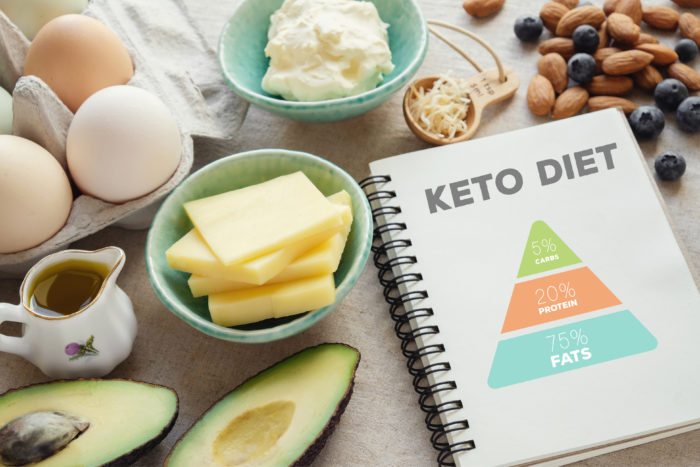
Recommended Macronutrient Ratios
The basis behind typical keto diet macros is to:
- Greatly reduce your intake of carbohydrates while moderating your protein intake
- Greatly increasing your consumption of healthy fats
Only limiting your carbs while not significantly bumping up your fat intake will not get you into ketosis. This will actually, more often than not, result in undereating due to the restriction of carbs and fats.
And likewise, increasing your fat intake while still consuming a significant amount of carbohydrates will keep you from producing ketones. And this could result in weight gain due to the extra calorie consumption.
Mastering the ketogenic diet takes a delicate macronutrient balance.
And although keto macros are important to stick to they can vary from day to day based on activity level and a host of other factors. And your keto macros may look completely different from your friend’s.
With that being said, here are the macronutrient ratios I recommend as a starting point on a ketogenic diet.
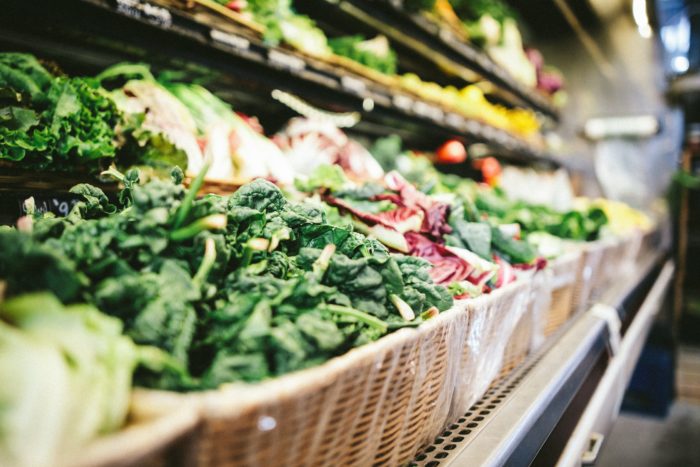
5-10% of Calories from Carbohydrates
In a 2,000 calorie diet, this would be anywhere from 25g to 50g of carbs a day.
This intake of carbs is greatly reduced from the typical 30-50% carb intake I recommend for a standard Paleo dieter.
When you’re first starting out, and aren’t quite into ketosis yet, you might need to keep your carb intake closer to 5%.
It will take some time for your body to use up its stored glucose. So during that period, keeping your carbs on the lower end of this window may help speed up the process.
But eventually, your body will become more efficient at burning ketones. When that happens you can usually increase your carb intake closer to the 10% range if desired.
Despite the low carb intake, please, don’t hear what I’m not saying; the ketogenic diet is NOT a no-carb diet.
I’ll say it again, the ketogenic diet is NOT a no-carb diet.
I’ve seen plenty of Instagram posts tagged with “#ketodiet” that only show a fatty coffee, three slices of bacon, and some eggs for breakfast.
Your body needs carbohydrates. And cutting out this macronutrient altogether will not get you into ketosis any faster. Nor will it help you see more health benefits from being in ketosis.
Finding Your Carb Tolerance
With that being said, the number of carbs that will be sustainable for your version of the ketogenic diet will depend on your individual ability to maintain ketosis. This is known as your carb tolerance.
Your carb tolerance in ketosis can depend on a variety of factors, including:
- amount and intensity of exercise
- metabolism
- how long you’ve been in ketosis
- stress levels
- protein intake
After you’ve been in ketosis for a few weeks, you could try playing around with your carb intake, especially before or after workouts. You can use this trial period to see where you can sneak more healthy veggies into your diet while still staying in ketosis.
Even with a higher carb intake, taking MCT oil and/or exogenous ketones can also help keep you in ketosis.
But, these supplements can be rather high in calories (since they’re 100% fat!). If you’re using them while eating a higher percentage of carbohydrates you should be mindful of your total calorie consumption. This is especially important if weight loss in ketosis is your goal.
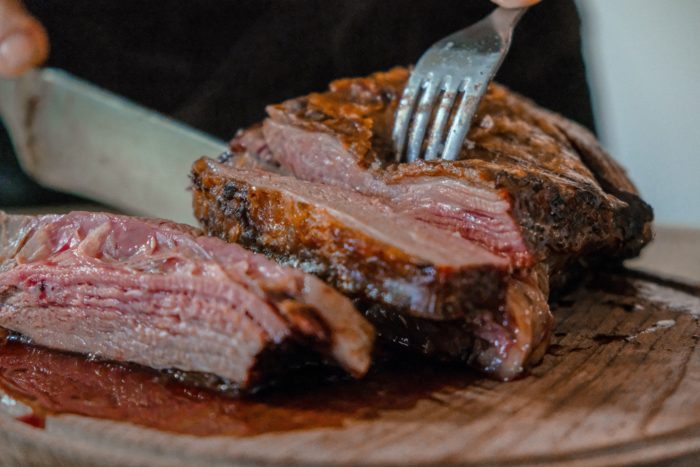
15-30% of Calories from Protein
In a 2,000 calorie diet, this would be anywhere from 75g to 150g of protein a day.
Believe it or not, eating too much protein can actually kick your body out of ketosis!
This is the result of a process called gluconeogenesis. When this process occurs, the body produces its own glucose from an excess of the amino acids found in protein.
Gluconeogenesis is not necessarily a bad thing. The brain and red blood cells need glucose for fuel. And on the ketogenic diet, you simply just aren’t consuming enough glucose. So in gluconeogenesis, the body can use excess protein to make its own.
But, too much protein can turn into too much glucose, which will keep the body from switching over to using ketones as fuel.
And as with carb intake, the appropriate amount of protein for your body in ketosis will vary.
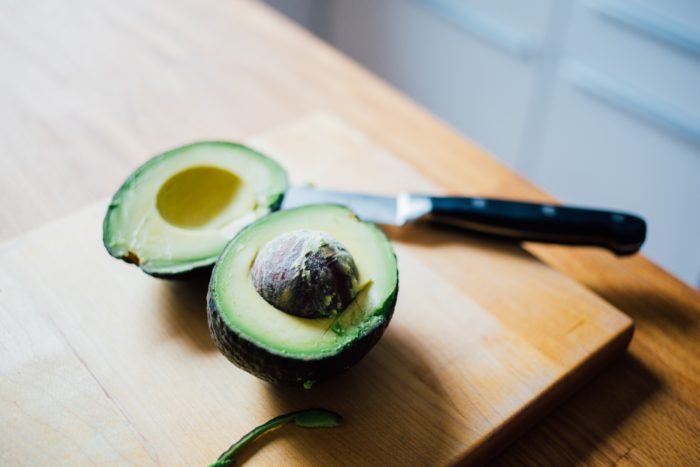
60-80% of Calories from Fat
In a 2,000 calorie diet, this would be anywhere from 133g to 178g of fat a day.
You might be thinking that this looks like a lot of fat. And you would be correct!
In order for your body to make the switch into ketosis, you need to give it A LOT of fat.
With this seemingly excessive fat intake, your body will learn that it still has a constant source of energy, and will start producing ketones.
Ideally, you shouldn’t be going overboard on the bacon and chicken wings though.
Healthy fats (like avocados, coconut, nuts, egg yolks, oily fish, etc.) need to make up a large majority of your diet.
Successful keto dieters should be getting their fats from a mix of saturated, monounsaturated, and some polyunsaturated sources, putting a high priority on omega-3 fats.
What to Eat
Now that you know how your daily macro breakdown should look in order to have success on a ketogenic diet, let’s look at what you should be focusing on eating for your health.

Fats and Oils
High-quality fats are a crucial part of a healthy keto diet.
The best oils to include are coconut oil, olive oil, avocado oil, grass-fed butter, ghee, and high-quality mayonnaise.
MCT (medium-chain triglyceride) oil is a form of saturated fatty acid that can be used to boost ketone production.
Many of my clients use MCT oil in their fatty coffees or teas to give them long-lasting energy throughout the day!
High-Quality Proteins
You should get all of your protein from high-quality poultry, red meat, fish, and whole eggs (they won’t kill you, promise!).
Fattier meats will give you more bang for your buck when it comes to the ketogenic diet.
For one they’re usually less expensive than their lean counterparts. But they also provide a more favorable fat to protein ratio for helping to keep you in ketosis.
Also try to aim for several servings of fatty fish (like salmon, mackerel, or sardines) a week. Fatty fish provide a great source of healthy omega-3 fatty acids.
Organ Meat
If you cringed a little when I mentioned organ meat, know that you’re not alone.
Consuming organ meat is hard for a lot of people to wrap their minds (or their taste buds) around.
But including organ meat in your whole food keto diet is something to consider. These cuts are rich in B-vitamins, iron, magnesium, zinc, and fat-soluble vitamins.
There are many ways to get organ meat into your diet, even if you can’t stomach the taste.
My favorite ways to get the health benefits of organ meat are to make a pate or mix it in with another ground meat. Or if I’m really not feeling the taste, I’ll chop it up, freeze it, and take it as pills.
Liver, heart, and kidneys are some good organ meats to start out with. They’re usually easy to find in natural grocery stores or butcher shops and can be easily disguised if you can’t stomach the taste.

Non-Starchy Vegetables
Non-starchy vegetables should be your partners in crime on the keto diet.
They should still fill a large portion of your plate even when you’re trying to dramatically increase your fat intake. Veggies are a wonderful vehicle for coconut oil, ghee, or butter, just saying!
You do want to be aware of your carbohydrate intake with some vegetables. But eating copious amounts of leafy greens, broccoli, cauliflower, leeks, onions, and brussels sprouts shouldn’t get you anywhere near your carb limit.
Full-Fat Dairy
If you can tolerate dairy, including some high-quality sources of it in your ketogenic diet is a good idea.
Grass-fed butter, cheese, yogurt, and heavy cream are all great sources of healthy fats and protein.
Fermented dairy is also a great way to get include probiotics in your day to help support your gut and immune system.
Nuts and Seeds
Nuts and seeds can be a great source of fats to help fuel your keto diet.
Macadamia nuts, cashews, and pecans are all fairly high in fat, relative to carbs and protein. And the same can be said for seeds like pumpkin and flax.
However, you’ll want to consume these foods in moderation due to their high omega-6 content.

Low Calorie, Sugar-Free Beverages
While you’re in ketosis, you won’t be enjoying a nice cold glass of lemonade (or sweet tea for all you southerners!).
The sugar in beverages counts every bit as much as the sugar in foods, and you’ll need to cut it out of your diet if you want to stay in ketosis.
But, that also doesn’t mean you should indulge in the sugar-free versions of sodas and other beverages. Artificial sweeteners have their own health risks that we won’t get into here.
You’ll want to focus on drinking lots of water, tea, coffee, and bone broth.
If you still need that soda-like fizz in your life, naturally-flavored sparkling waters are a great option.
Herbs and Spices
Use herbs and spices to your heart’s content.
Do be aware, though, of any spice blends that may contain hidden sugars, like dextrose.
Your safest bet would be to use individual spices and combine them to make your own yummy spice blends.
What to Avoid or Limit
Now comes the less enjoyable part of any diet, learning what you shouldn’t be eating. But, if you want to be successful with the ketogenic diet, avoiding or limiting your intake of these foods is going to be critical.

Sugar
Sugar, including refined white sugar, but even natural sugars like honey and maple syrup are big no-no’s on the ketogenic diet.
These foods will provide a rapid spike in blood sugar, and most likely kick you out of ketosis before you can even say “ketosis.”
If you’re coming into keto from a standard American diet, this decrease in sugar might be a tough adjustment for your body to make.
As you’re easing your body into ketosis, you can work on slowly decreasing your amount of added sugar in order to make the transition a little easier.
You can also try using sugar replacements, such as stevia, xylitol, monk fruit, or yacon syrup.
These sugar replacements can cause digestive upset in some people. So a good long-term goal would be to remove all added sweeteners from your diet.
Grains and Pseudograins
Grains (like wheat, rice, corn, and rye) and pseudo-grains (like buckwheat and quinoa) are two groups of foods that are very high in carbohydrates and should be avoided on your ketogenic diet.
The jury is still out on whether grains should be included in a health-promoting diet. So keto or not, eating them may not be the best for our health.
Beans and Legumes
Like grains, beans and legumes (black beans, kidney beans, peanuts, etc.) pack a lot of carbs per gram.
These foods are actually very nutritionally dense when prepared properly. But the carbohydrate content of these foods makes it difficult to include them in a standard ketogenic diet.
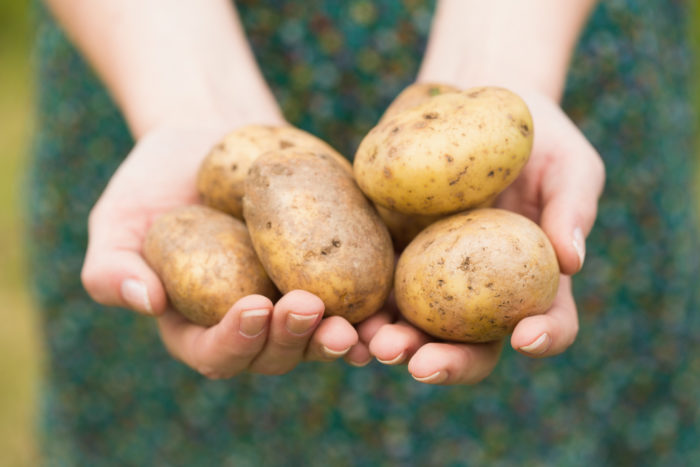
Starchy Vegetables
For most people starting out in ketosis, it’s wise to avoid starchy vegetables (like sweet potatoes, white potatoes, or plantains).
But, if you’re more active and do a lot of glycolytic exercise (Cross Fit, heavy lifting, sprints, etc.), you might find that there’s room in your ketogenic diet to include some starchy vegetables.
I would advise maintaining ketosis for a few months, and then start playing around with the timing and quantity of starchy vegetables.
If you’re able to stay in ketosis while eating some starches, go for it!
Fruit
Most fresh and dried fruits are high in carbohydrates and natural sugars. So it’s usually best to avoid these foods in order to stay in ketosis.
However, eating small amounts of low sugar fruits, like berries, may be possible.
And like with starchy veggies, fruits may be able to play a larger role in your keto diet if you work out intensely.
If you’re getting the itch to include more fruits in your keto diet, try eating them before or after a more strenuous workout. You might find that you’re able to stay in ketosis and enjoy some fruit every once in a while!
Trans Fats and Industrial Vegetable/Seed Oils
These foods are high in fat and a seemingly perfect fit for the ketogenic diet. But I would never recommend trans fats or processed vegetable/seed oils as a part of a healthy diet.
These oils contain a high omega-6 (pro-inflammatory fats) to omega-3 ratio (anti-inflammatory fats) and should be avoided in all healthy diets.
These types of oils include canola oil, soybean oil, corn oil, and vegetable oil.
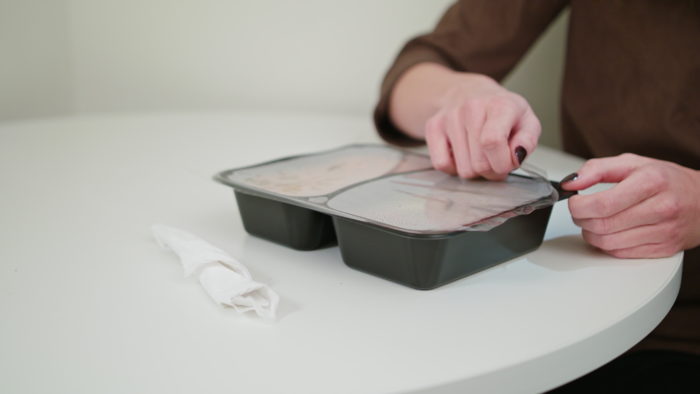
Processed Foods
Processed foods would never be my first recommendation, but I do understand that sometimes grabbing a quick snack on the go is necessary.
The problem with processed foods on a ketogenic diet is that they often have hidden added sugars and unhealthy fats.
I know it’s likely not possible to avoid processed foods altogether, it would be best to limit your intake.
And if you do need a grab-and-go snack or a quick meal, try to choose ones that are made with healthy fats and limited added sugars.
How to Track Ketone Production
Tracking ketone production is an important step in knowing whether or not your body is actually producing ketones in response to your change in diet.
Testing your body’s ketone production will help tell you if your keto diet is on track. Or it will give you insight on whether or not you need to dial it in a little more.
The switch into ketosis can sometimes be difficult. So, knowing exactly where your body is at in response to your diet change can be helpful.

When to Test Ketones
Your body’s ketone production will fluctuate throughout the day.
So in order to really determine how you’re progressing and if you’ve made it into ketosis, testing at the same time each day is ideal.
Ketones are usually the lowest in the morning. So testing at this time of day will give you a good idea of your body’s ability to hold ketosis over a long period of time.
Your body is likely to produce the most ketones after a high-fat meal, or right after intense exercise.
I would recommend not testing your ketones after either of these events, as you’re likely to get a falsely high reading.
The best time to test ketones during the day is usually early evening. 2-4 hours after lunch, and before dinner is typically a good time frame for most people.
Testing around this time will give you a good indication of how your body is using the fat and carbs you’ve been feeding it during the day.
Testing Ketones to Determine Carb Tolerance
Another reason you might want to test ketones is to determine your carb tolerance. Your carb tolerance is basically or how a certain higher carbohydrate food affects your ability to stay in ketosis.
To check your carb tolerance, you would want to eat a single serving of your carb of choice, and then wait about two hours before testing.
If you’re still in ketosis, then that type and amount of carbohydrate works for you!
This will obviously change based on the day, what you ate previously, if you’ve worked out recently, and even where you are in your menstrual cycle.
Determining your carb tolerance by testing ketones can be a useful tool. But you might be better off just going by how you feel after you eat certain carbs.

Testing Ketones – Using a Blood Ketone Meter
Testing the ketone levels in your blood is by far the most accurate way to determine if you’re in ketosis.
The type of ketone body that’s found in your blood is beta-hydroxybutyrate or BHB. This is the ketone that your body actually uses for fuel.
So, in using this method you’ll know how many ketone bodies are available at that moment for your body to use as fuel.
However, this is also the most expensive method of testing. You’ll need blood test strips that are one-time use only.
Once you have your equipment, all you need is a small drop of blood and you’ll know if you’re in ketosis or not. But if pricking your finger sounds stressful to you, this might not be the best method of ketone testing for you either.
You’re considered to be in nutritional ketosis if you have a blood ketone reading of 0.5 mmol/L or higher.
And when it comes to ketones, in general, more is not better. Anything above 0.5 mmol/L will keep you feeling those good effects of being in ketosis.
Testing Ketones – Using a Breath Meter
Testing ketones using your breath measures the amount of the ketone body acetone that has been exchanged between the blood and the lungs.
This isn’t the ketone body that is directly used for energy. But acetone has been shown to be directly correlated to BHB, the ketone body that is used for energy.
Breath testing is probably a close second behind blood testing when it comes to accuracy. And this method is a scientifically validated test for measuring nutritional ketosis.
All you’ll need is to purchase a ketone breath meter and blow into it. Easy as that!
If you’re using a standard ketone breath meter, you’re considered to be in nutritional ketosis if it reads anywhere from 40-70.

Testing Ketones – Using Ketone Urine Strips
Testing ketones through urine tests for the specific ketone body called acetoacetate.
These ketone bodies make it into your urine if they’re produced in excess, and your body doesn’t need them all for energy.
When your body is just starting out producing ketones it still needs to learn how to properly use them for energy. During this time there will be a lot of ketones just excreted through your urine.
Basically, your body is saying “I’m not quite sure what to do with these, so I’ll just get rid of them until I figure it out.”
This makes testing urine for ketones very effective while you’re in the beginning stages of ketosis and not efficient at using them for fuel.
But once your body gets efficient at using ketones, and is excreting less of them through urine, this test becomes more unreliable.
So, even though your body is definitely in ketosis and doing a great job at using ketones for energy, a urine test might show falsely that you’re not even in ketosis.
Your level of hydration is just one of the many other factors that can influence the results of this test.
This is why urine ketone testing is the least accurate measure of actual ketone production.
However, this testing method is still popular because it’s relatively inexpensive and easy to get a quick result.
Reading the result is as easy as matching the color of your test stick to a color on the package to let you know the number of ketones being measured.
This testing method is great if you’re just starting out on a keto diet, and want to see exactly when you make the transition into ketosis. But, it’s less reliable the longer you’re actually in ketosis.
Blood Glucose Testing
Blood glucose testing won’t directly tell you whether you’ve made the switch to ketosis or not. But it will give you an idea of how your ketogenic diet is affecting your blood sugar.
While in ketosis, your blood glucose will be relatively stable throughout the day. This is because you’re probably not influencing it with many consumed carbohydrates.
Testing blood glucose is definitely not necessary while in ketosis. But it could be interesting if you’re into tracking how your body responds to these types of dietary changes.

How to Tell You Might Be in Ketosis without Testing
Just because you’re eating a ketogenic diet and your body is now using this new source of energy (so cool!) doesn’t mean that you’re required to test your ketone levels.
For many people, testing ketones can be just like weighing yourself on a scale.
It then becomes a numbers game, a challenge, something that you can measure. Viewing any diet like this, especially on that is so restrictive, can really mess with your head.
So, if tracking and measuring is not really your thing, don’t worry. There are other cues your body is giving you that can show you if you might be in ketosis.
The first way you can tell you’re no longer burning glucose for fuel is that you can go longer without eating or even thinking about food.
This is usually a result of your steady blood sugar and slow-burning effects of those ketones.
You might also experience increased mental clarity.
Now, don’t expect ketosis to turn you into a super genius. But producing ketones can help you to be very clear headed and focused.
When they first transition into ketosis, many people also report having very vivid dreams.
There’s no way to definitively tell that you’re producing ketones without actually testing. But listening to your body for some of these signs can definitely point you in that direction.

What to Expect when Switching to a Ketogenic Diet
As you can imagine, making the switch from burning glucose for fuel to burning ketones for fuel is not an easy transition for your body to make.
It’s a switch that your body has been programmed to be able to make. But for some people, their bodies aren’t shy about letting them know how difficult using ketones as energy is.
The main side effect of switching to a ketogenic diet is a group of symptoms known as the keto flu.
The keto flu occurs as your body is withdrawing from its dependence on carbohydrates. During this time your body is struggling to make the switch to burning ketones for energy.
The keto flu gets its name because it often mimics symptoms of the actual flu. Symptoms such as stomach aches, dizziness, nausea, irritability, muscle cramping, insomnia, brain fog, and so on are very common.
These symptoms can occur anywhere from a few days to a few weeks after switching over to a ketogenic diet.
And, despite what you may feel, these symptoms don’t necessarily mean that this diet doesn’t work for you. It just means that your body is responding to the drastic change in energy you’re providing it, and it needs some time to adjust.
In order to minimize the negative effects of the keto flu, it’s critical that you stay hydrated. You can even add some supplemental electrolytes or coconut water into your day to help balance electrolytes.
As your glycogen stores are depleted, much of your body’s water stores leave with them. This loss of water leaves you more susceptible to dehydration.
The keto flu shouldn’t last long. And once you’ve made it over the hump your body should be a well-oiled ketone producing machine!

Is a Ketogenic Diet Right for You?
Now that you’ve seen the science behind ketosis, and how you’d need to alter your diet, you might be beginning to think that a ketogenic diet is right for you.
And that’s great, there are many benefits of being in ketosis. This diet can definitely improve a lot of health conditions.
However, there are also many drawbacks to asking your body to make this type of fundamental change in its energy production.
In this next section, I’m going to give you some information to help you decide if a ketogenic diet is right for you and your health conditions.
Pros and Cons of a Ketogenic Diet
Here’s a general, but not all-inclusive, pros and cons list regarding the ketogenic diet.
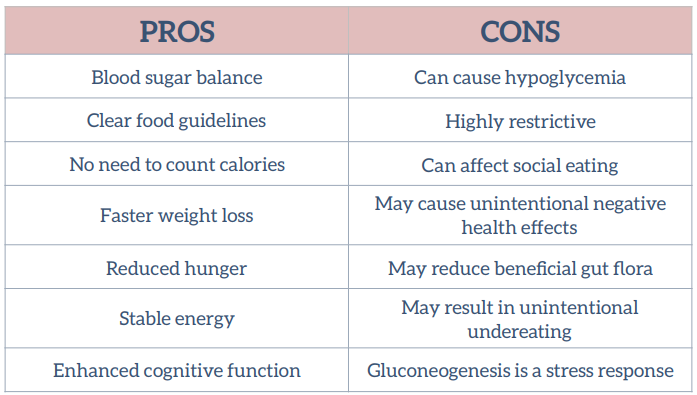
Populations that Might Benefit from a Ketogenic Diet
Seizure Disorders
The original purpose of the ketogenic diet was to help reduce the frequency of seizures in patients with epilepsy.
This is a positive effect of being in ketosis that still stands true today.
If you have a diagnosed seizure disorder, especially if it hasn’t been fully responsive to conventional treatment, a ketogenic diet might help to control your seizures.
But before attempting a ketogenic diet as part of your epilepsy treatment, it’s critical that you speak to your health professional team.
Would you like to save this post?
Your email address is 100% safe and will never be sent spam.

Cognitive Disorders
Cognitive disorders (such as Alzheimer’s, Parkinson’s, and dementia) are characterized by a measurable decline in cognitive abilities.
Recent research has been able to support a strong link between blood sugar disorders and various cognitive changes, including memory loss and cognitive impairment.
A ketogenic diet is good for blood sugar management, and therefore may be useful in preventing blood sugar related cognitive disorders.
Also, in cognitive disorders of aging, the brain may lose the ability to utilize glucose efficiently. So much so that some researchers are even calling Alzheimer’s “Type 3 Diabetes.”
By switching from burning glucose to burning ketones, the brain is then able to produce energy more effectively. A switch that can theoretically help prevent some cognitive decline.
Severe Blood Sugar Dysregulation
Reactive hypoglycemia is a severe form of blood sugar dysregulation. This condition is usually a result of the production of too much insulin.
It most often occurs after the consumption of a large carbohydrate-based meal and can happen to anyone, not just diabetics.
Following a low carb, ketogenic diet can be helpful to correct this spike and subsequent drop in blood sugar.
The ketogenic diet is great for keeping blood sugar more stable. Eating a diet high in fat and low in carbs makes insulin almost a non-factor in your day.
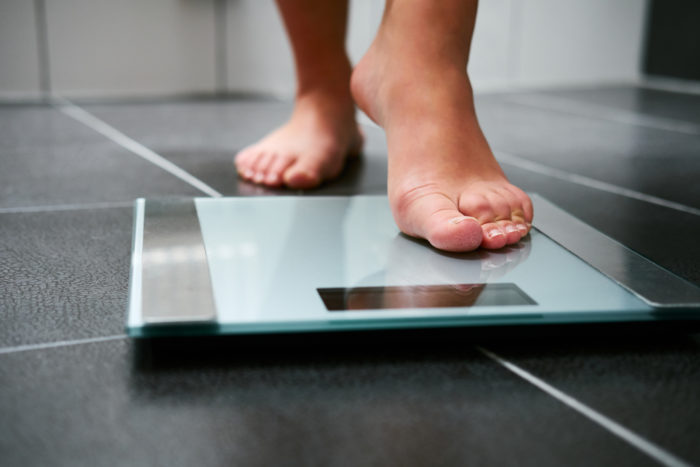
Metabolic Syndrome
Metabolic syndrome is characterized by a cluster of conditions – increased blood pressure, high blood sugar, excess body fat around the waist, and abnormal cholesterol levels.
All of these conditions can eventually lead to larger issues like insulin resistance and diabetes in genetically predisposed people.
Some of the potential triggers of metabolic syndrome, chronic inflammation, and insulin resistance, may improve from switching to a ketogenic diet.
A ketogenic diet, however, would not be recommended for people with Type 2 Diabetes and are on insulin. Being in nutritional ketosis if you’re diabetic increases the chances of developing ketoacidosis.
Obesity and Weight Loss Resistance
If you have struggled to lose weight in the past, the ketogenic diet can be an effective weight loss strategy.
The diet does a great job at effectively reducing appetite thanks to the ultra-satiating fats. This appetite reduction can often make calorie restriction even easier.
And as a fat burning machine, your body can effectively use stored fat as fuel when you aren’t eating.

Endurance Athletes
Some athletes may want to exercise caution with a ketogenic diet. But there is evidence that suggests the fat burning nature of being in ketosis may provide better, long term fuel for longer athletic events.
Burning glucose for fuel is great until your body runs out of glucose. And since it can get used up fairly quickly, this can become problematic in endurance based events.
Reliance on fat as a slow-burning fuel source could provide a better form of sustainable energy for extended periods of athletic performance.
However, getting into ketosis requires a major shift in the typical fuel source your body uses. So it’s not recommended that you make the switch to ketosis within two months of competition.
Your performance may decline slightly after the switch into ketosis as your body learns how to effectively use its new source of fuel.
Or a higher carbohydrate version of the ketogenic diet might be the key to sustained performance in endurance events.
Gut Infections
Many pathogenic gut microbes readily feed off of carbohydrates.
If you have a gut infection or dysbiosis, switching to a ketogenic diet may help to reduce your symptoms. Eating high fat and low carb could also potentially reduce the pathogenic burden in your gut.
However, if you know you have a candida overgrowth, proceed into ketosis with caution.
Yeast can adapt to feed off of ketones, so being in ketosis can actually worsen your yeast overgrowth. Being in ketosis can even create an overgrowth of yeast if the conditions in your gut are prime for it.
So, while being in ketosis can be good for some gut infections, it can actually make others worse. Talking to a trusted health professional about your gut issues and any subsequent dietary changes are always the best way to go!
Populations Who Should Be Cautious About a Ketogenic Diet
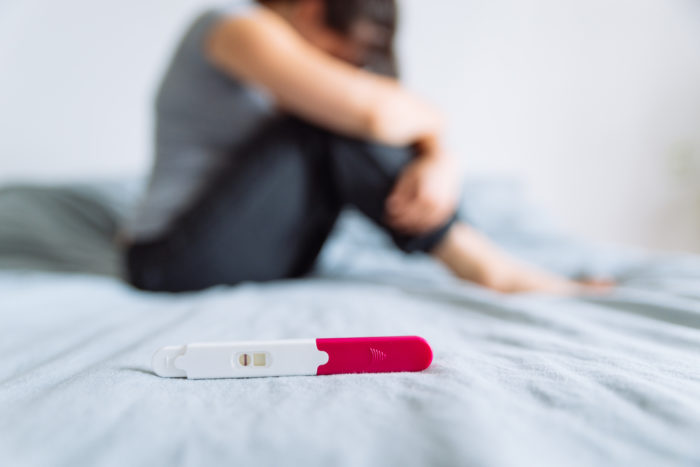
Infertility
Certain low carb diets can help support fertility. But a ketogenic diet may be too low in carbs to promote ovulation in some women.
The ovaries are highly sensitive to blood sugar levels and insulin. If your insulin is too low your ovaries may stop producing eggs and you won’t ovulate.
Also, very low carbohydrate diets can trigger hypothalamic amenorrhea in some women. In this case, your body feels that it’s in too stressful a situation to reproduce.
Eating large amounts of high-quality fats is key for healthy hormones and reproduction. But the drastic reduction in carbs on a ketogenic diet may be too much of a stressor on a body that is already dealing with infertility.
You should be especially cautious with the ketogenic diet if you’re already in the low-normal or underweight BMI category.
Pregnancy or Breastfeeding
There’s a lot of debate around low carb diets during pregnancy. While these types of diets are not acutely harmful to the developing fetus, it still might not be the best idea.
Eating a low carb diet during pregnancy may affect your child’s ability to use carbohydrates efficiently after birth.
And, more significantly, studies done on mice have shown changes to fetal organ development when the mother was eating a ketogenic diet.
The risk of ketoacidosis is also higher in women who are pregnant or breastfeeding, especially if the overall calorie intake is inadequate.
There is generally a lack of evidence on how ketogenic diets can affect pregnant women and her child. So, it’s recommended that you proceed with extreme caution if attempting to be in ketosis while pregnant or shortly after.
Type 1 Diabetes
Type 1 Diabetes is the most common circumstance where diabetic ketoacidosis could develop.
Because of this risk, it’s always suggested to use caution if attempting to switch to a lower carb or ketogenic diet if you have Diabetes.
Adjusting your insulin dose will be a critical step in continuing to manage your Diabetes while altering your carbohydrate intake.
Always work with your medical team if you think trying a ketogenic diet might be good for your health situation.

Eating Disorders
If you have a history of disordered eating, you know how triggering diets of any kind can be.
The ketogenic diet can be rather restrictive. So it can be potentially dangerous for anyone currently suffering, or who has suffered from an eating disorder to attempt eating this way.
Ketogenic diets can specifically cause unnecessary fear around carbohydrate-containing foods. This is something that could be potentially triggering for anyone with a history of eating disorders.
As always, if you think you’re beginning to experience disordered thoughts or behavior around food and/or exercise, reach out to a trusted medical professional for guidance.
Children
Attempting any sort of dietary manipulation that’s not medically necessary with children is not advised.
There’s a lot of concern over the effects these dietary changes can have on the healthy growth and development in children. And the same holds true for a ketogenic diet.
Compliance to the diet can also be challenging, especially with older children who are able to choose their own food. Kids most often just want to fit in with their friends and have a slice of pizza!
It’s only recommended that a strict ketogenic diet be used with children who have a clear medical need.
High Intensity (Non-Endurance) Athletes
Athletes who rely on anaerobic pathways to fuel their style of training often perform poorly on too low of carbohydrate intake.
These types of athletes would include those who do exercise that requires bursts of high intensity. Ones who participate in heavy weight training, sprinting, CrossFit, track and field, basketball, or gymnastics for example.
An anaerobic exercise is one that is completed without the use of oxygen. This type of exercise typically lasts only up to two minutes.
After about two minutes, the body’s aerobic system kicks in and oxygen is available to help fuel the exercise.
But, in anaerobic exercise, because of the lack of oxygen, the body requires glucose as fuel.
Without adequate glucose availability in the body, the athlete’s performance will suffer.
On a ketogenic diet, performance in anaerobic activities depends entirely on the body’s ability to produce glucose from gluconeogenesis.
I’ve found that many athletes are unable to produce enough glucose without consuming carbohydrates. This leads to performance and recovery impairments while in ketosis.

“Adrenal Fatigue” (or HPA Axis Dysfunction)
One of the main causes of hypothalamic-pituitary-adrenal axis (HPA axis) dysfunction is blood sugar dysregulation.
A diet high in refined carbohydrates can definitely worsen HPA dysfunction. But a diet too low in carbohydrate intake can also cause similar problems.
People who already have poor HPA axis function before starting a ketogenic diet may struggle with gluconeogenesis and blood sugar control while on the diet.
Gluconeogenesis is a stress response. A response that relies on stress hormones in order to adequately produce glucose for the body.
Commonly with HPA axis dysregulation, the body is already in a stressed-out state and stress hormones are at abnormal levels. This can prevent gluconeogenesis from occurring normally, leading to additional stress on the body.
Which is exactly what we don’t want to happen if we’re trying to heal HPA dysregulation.
Also, on a ketogenic diet, there is an increased risk of inadequate calorie intake. This unintentional undereating can worsen or initiate HPA axis problems.
Hypothyroidism/Hyperthyroidism
Blood sugar and thyroid function are closely related. Since a ketogenic diet greatly impacts blood sugar regulation, it also has the ability to affect the function of the thyroid.
The main function of the thyroid is to convert iodine into thyroid hormone (known as T3 and T4).
T3 and T4 are then released into the bloodstream where they help control the body’s metabolism.
T4 is known as the thyroid “storage hormone,” while T3 is the “energy hormone.” Before it can be used, T4 must first be converted into T3.
This conversion process of T4 to the active T3 requires the use of insulin. Some people can develop very low insulin levels on a ketogenic diet, which can impair this conversion process.
This reduction in insulin can reduce the production of free T3 in the body. Low levels of T3 can lead to hypothyroid symptoms (such as fatigue, depression, constipation, or hair loss).
The conversion of T4 into reverse T3 (rT3) is also a critical function of a healthy thyroid. Reverse T3 serves as the body’s “emergency brake,” and inhibits T3 function.
Without proper levels of rT3, the T3 hormone can become too high. This can result in hyperthyroid symptoms (such as weight loss, rapid heartbeat, anxiety, or insomnia).
HPA axis dysfunction, which can worsen on a ketogenic diet, can also impact this conversion of T4 to rT3.
The ketogenic diet’s inherent risk of undereating can also be a factor behind impaired thyroid function.
High Cholesterol
When on a ketogenic diet, some people will see an increase in total cholesterol.
So, if your cholesterol is already in the higher range, you might want to exercise caution when increasing your fat intake enough to support a ketogenic diet.
In many cases though, blood sugar and triglycerides will be normal or even low when eating high fat and low carb.
So, the keto diet is not all bad for your cholesterol.
I would, however, recommend working closely with a trusted medical professional if you do have a history of high cholesterol and want to try out a ketogenic diet.
Cancer
It’s been shown that some forms of cancer (brain tumors for example) may benefit from a ketogenic diet. But other cancers may see zero benefits from the production of ketones.
Overall, there is not a large enough body of research to definitively promote the ketogenic diet for the treatment of cancer.
In addition, cancer patients often struggle with appetite and adequate calorie intake. So putting the restrictions of a ketogenic diet on top of that may not be a good idea.
The keto diet also inherently exacerbates low appetite because of its satiating nature.
This appetite reduction can result in inadequate calorie intake. And in a person with cancer, this can cause dangerous levels of weight loss during treatment.

Keto for Weight Loss
Keto for weight loss is definitely all the rage these days. And it’s not all completely unfounded enthusiasm.
In theory, the ketogenic diet is great for weight loss. The body is now adapted to burning fat for fuel, and fat (particularly body fat) is exactly what you want to shed.
However, you may not need to go full keto in order to reach your weight loss goals.
A ketogenic diet is usually more useful if you’re significantly overweight/obese and generally sedentary.
If your weight is preventing you from working out, trying out a ketogenic diet may help you get to a place where more movement is possible.
But, if you’re only moderately overweight and able to exercise a few times a week, you might be better off matching your carbohydrate intake with the style of exercise that works for you.
Use this handy chart below to get an idea of what exercises typically go well with what forms of a low-carb, high-fat diet.

Short Term Ketosis as a Weight Loss Strategy
Another way to integrate a ketogenic diet into your weight loss routine can be to use it short term. This method would work well to help you recover better insulin sensitivity.
When your body loses its sensitivity to insulin, you become insulin resistant.
Insulin resistance prevents the cells in your body from using insulin effectively. This then keeps them from absorbing glucose, therefore keeping your blood sugar elevated.
And people with low insulin sensitivity have a higher chance of developing a metabolic disorder such as diabetes, obesity, or heart disease.
Furthermore, insulin is at least partially a fat-storing hormone. The more of it circulating around in your bloodstream the harder it becomes to burn body fat and lose weight.
Consuming carbohydrates triggers the production of insulin. So it can be helpful to reduce your carb intake if you’re having problems with your insulin sensitivity.
The ketogenic diet can help to decrease insulin levels in the body. This reduction in insulin can potentially work to help reduce any developed insulin resistance.
After your insulin sensitivity has recovered, you can then start to expand your diet and be more liberal with your whole food carb intake. (You’ll know you’re no longer insulin sensitive by testing your blood sugar.)
All in all, ketogenic diets have the ability to aid in weight loss or get your body in a healthier place where it can more easily lose weight.
But in my opinion, they’re not the holy grail for weight loss. You should still take appropriate precautions before attempting to so drastically alter your macronutrient ratios.

Potential Gut Impact of a Long Term Keto Diet
By now it’s widely known that gut health impacts the health of almost every other body system.
But, what people may not know is how a long term ketogenic diet may impact the health of your gut.
The large intestine is home to more microscopic bacteria than we have cells in our body.
These friendly gut bugs (called your microbiome) help to primarily regulate our digestion. But they also keep our immune system running optimally and maintain balanced moods, among a host of other things.
Without these bacteria, or when we have an imbalance of beneficial to pathogenic bacteria, our whole body suffers.
And, like any other organism, these bacteria need to be fed in order to keep our gut working like a well-oiled machine.
Ketosis and Food for Our Gut Bugs
The foods that these bacteria feed on are ones that aren’t readily digested by our own bodies. The most common source of these foods are fibers from fruits and starchy tubers.
These are the foods that are removed entirely in a ketogenic diet. They’re high in carbohydrates and would prevent the body from producing ketones.
The keto diet is just inherently low in soluble fiber and resistant starch, the two main sources of food for our gut bacteria. The same methods that help get you into ketosis also serve to starve our gut bacteria.
It’s unclear how the ketogenic diet affects gut health in the long term, so caution is definitely warranted.
If you still think it would be beneficial to try a keto diet, the best way to reduce the likelihood of microbiome disturbances is to increase your intake of non-starchy plant food. Foods high in FODMAPs (like leeks, onions, asparagus, broccoli, and brussels sprouts) are key.
You can also try supplementing with prebiotic fibers (such as FOS or GOS) to help keep those beneficial bugs adequately fed.
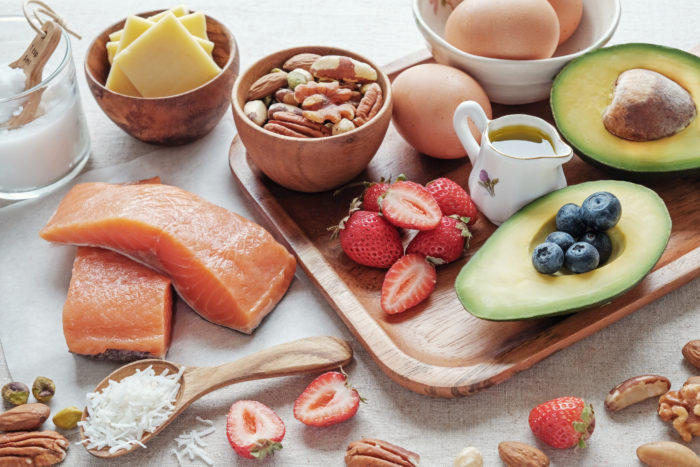
Troubleshooting Common Keto Issues
Getting into ketosis requires a dramatic dietary change. So there are bound to be some issues that come up while you’re on the ketogenic diet.
Even if you do the diet perfectly, there’s just no telling how your body will react to the different macro ratios and source of energy that being in ketosis provides.
It’s definitely best to work with someone one-on-one while attempting a dietary change like keto.
Here are some general issues I’ve commonly seen in clients who have been on a ketogenic diet that I think you should be aware of.
Weight Gain
Are you noticing some unintentional weight gain now that you’re eating way more fat than you’re used to?
These extra pounds probably stem from the consumption of extra fats. Fats, as you could imagine, are the macronutrient with the highest number of calories per gram.
And the goal on a keto diet is to eat a large amount of this calorie heavy macronutrient. So it’s not difficult to be overeating.
If you’re seeing the scale moving in the wrong direction I would try tracking your food intake for a few days.
This way you’ll not only get a feel for how many calories you’re consuming, but you can also check your macro balance to make sure it’s optimal for producing ketones.
You might also want to take a look and see if you’re eating a few too many keto desserts or fat bombs.
It’s incredibly easy to eat a few extra of these incredibly satisfying keto-staples on your way out the door.
Dietary fat is not the enemy. But if you’re gaining weight on the keto diet, just make sure you’re not over-consuming calories from fat.
Weight Gain and Thyroid Function
If you’re eating an appropriate amount of calories for your body size and activity level, you can also look into your thyroid function as a cause of weight gain.
You might see some unexplainable weight gain if your thyroid is producing too little thyroid hormone.
It’s also very possible that the ketogenic diet just doesn’t work for your body. If this is the case, you might be able to better maintain your weight on a moderate to high carb diet.
You don’t know how a certain diet will affect you until you try. But if you’ve ruled everything else out, getting off the keto wagon might be the only way to help halt your weight gain.

Gut Disturbances
If you’ve started eating keto, but notice that your gut function has gone downhill, there are a few things you can look into as the root cause.
First, ensure that you’re eating an adequate amount of non-starchy plant food. Vegetables like leafy greens, broccoli, onions, or brussels sprouts are great options.
These foods help to feed your gut bacteria, which help to keep your gut functioning optimally.
And like I said earlier, keto is not a no-carb diet.
So, if you’ve slowly inched your way to no-carb land, it might be time to be intentional about adding those non-starchy veggies back in.
You can also take a look at the types of fats you’re eating. If you notice you’re experiencing gut distress after eating certain ones, you might need to remove them for a time.
For example, coconut products when eaten in excess can cause cramping and diarrhea in some people.
And I’ve seen clients who, after consuming MCT oil, would have some unpleasant digestive symptoms.
It might help you to keep a food journal for a few days. Write down everything that you eat and any symptoms you experience. This way if your gut disturbances are caused by a certain food you should be able to pinpoint it.
Your impaired digestion could also be caused by the fact that you’ve greatly increased your fat intake. Your body might need some targeted support while it’s adjusting to a higher fat diet.
If you think that may be the case, you can try supplementing with digestive enzymes or ox bile to help improve fat digestion.
But, if you’ve tried all of these and you’re still having problems with your digestion, keto just might not be right for you.
Sleep Disturbances
Some people find that they sleep better than ever while on a ketogenic diet.
But, if you’re not one of those people, there are a few things you can try to remedy your sleep issues.
Most importantly, you’ll want to check to make sure you’re eating enough.
Calorie deprivation is the most common cause of sleep disturbances that I see with my clients.
If you’re having trouble sleeping, it could be because you’re not eating enough. Especially if you find yourself waking up often in the middle of the night.
Tracking your food intake for a few days can help ensure you’re getting enough calories to support your body and activity levels.
You could also consider introducing a mild carb refeed at night. This would be helpful if you suspect low blood sugar is behind your sleep troubles.
If this seems to be the case, eating a small number of carbs with dinner should help to resolve this issue. And these few extra carbs at the end of the day probably won’t keep you out of ketosis.
Low estrogen can cause insomnia. So you can also look into getting your sex hormones tested if you’re not sleeping well.
Finally, I’ve worked with many clients who just don’t sleep well on a very reduced carbohydrate intake. The only way to correct their sleep issues is to increase their carb intake.
If you think this might be you and you still want to eat a relatively high-fat diet, I would suggest increasing your carb intake slowly until you find the sweet spot. One where you’re sleeping well but still benefiting from a higher fat intake.

Amenorrhea (Loss of Period)
Amenorrhea is the abnormal absence of menstruation. And it can occur for a variety of reasons, which is why this condition can be so difficult to correct.
One of the most common reasons that I’ve seen for amenorrhea is undereating. And when attempting a ketogenic diet, undereating is extremely common.
So, if you’re eating keto and you’re experiencing any sort of abnormal menstruation patterns (including amenorrhea) I would recommend tracking your food intake for a few days. This will help ensure that you’re getting adequate calories each day.
If you find that your calorie intake is sufficient, but you’re still not getting a period, your body just might need more carbs in order to ovulate than what a ketogenic diet allows.
You could consider trying intermittent carb refeeds if you really want to stay in ketosis. Or if that doesn’t work for you, a low carb but not ketogenic diet may be your best bet for recovering your period.
Also, losing more than 10 pounds in a short period of time can trigger amenorrhea in many women.
So, if going keto has caused some drastic weight loss, that might be able to explain your lack of a regular cycle.
However, if your cycle doesn’t regulate in a few months after the drastic weight loss, I would recommend increasing your carb intake to see if that corrects your amenorrhea.
Loss of Athletic Performance
The switch into ketosis is not an easy adjustment for your body to make. You can expect a slight decrease in performance and recovery right after you start producing ketones.
But, if it’s been a few months and you still aren’t back to your old self, you might want to consider making some changes to your diet.
Implementing a pre or post workout carbohydrate load may help counteract the loss of performance in ketosis.
You would eat a large number of carbohydrates right before or right after a workout. This would ideally provide your body with enough glucose to fuel your athletic endeavors.
You’ll still reap all the benefits of ketosis the rest of the day. Plus you’ll be able to fuel your workouts using that sharp increase in carbohydrates.
If that doesn’t seem to be helping your performance, your body may just need a sustained higher carb diet in order to perform at its peak athletic ability.

Cramps
Mineral and electrolyte imbalances are typically the cause of cramps while on a ketogenic diet.
In ketosis, you’ve used up all of your glycogen stores. Glycogen is stored in the body with water, and when the glycogen is used up water is flushed out as well.
This can leave someone who is in ketosis with a slight electrolyte and mineral imbalance.
In order to overcome this, you’ll want to ensure that you have adequate salt, electrolyte, and mineral intake. Focusing on sodium, potassium, calcium, and magnesium will be particularly helpful.
Regaining this delicate balance in the body may involve supplementation or drinking mineral fortified water.
If you’re suffering from cramps, you’ll also want to ensure that you’re getting adequate fluid intake and not becoming dehydrated. Dehydration is more common in ketosis, for the above reasons.
Hypoglycemia
If you’re suffering from low blood sugar while on a ketogenic diet, there are a few things you can attempt to correct it.
Simply not eating enough is a common cause of hypoglycemia. And with the satiating nature of fats, a ketogenic diet can sometimes lead to undereating. Tracking your food consumption for a few days can help you determine if increasing your calories can resolve your low blood sugar.
If that doesn’t seem to be the problem, you may just need to increase your carbohydrate intake.
It’s possible that your liver may not be able to produce its own glucose efficiently enough. If this is the case, your body is having trouble maintaining its glucose levels to fuel the brain and red blood cells.
High Cholesterol
A ketogenic diet is generally one that can help normalize blood cholesterol levels. But it is possible that your overall cholesterol can increase while in ketosis.
If this is the case for you, you can try eating less saturated fats and more monounsaturated fats.
This would be switching from things like butter and lard to olive and avocado oils.
You also may be having a slight inflammatory response to some of the foods you’re eating. For example, I’ve seen many clients react poorly to the increased dairy consumption on a keto diet.
If you think this might be you, you can try eliminating certain inflammatory foods, like dairy, and see if that helps lower your numbers.
Or, you might be one of those people whose body just doesn’t agree with the ketogenic way of eating.
Developing high lipids while on a ketogenic diet could be a sign that the keto diet isn’t the right fit for your body.
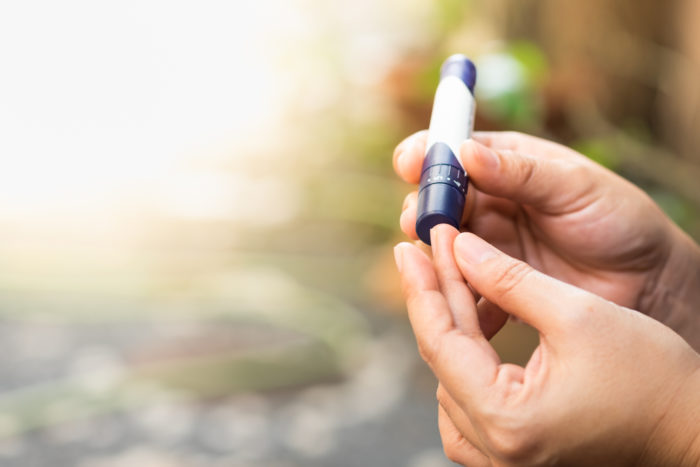
High Fasting Blood Sugar
Experiencing high fasting blood sugar is a paradoxical reaction to a ketogenic diet that many people experience.
I’ve seen many instances where clients would experience normal or low blood sugar during the day. But then they would wake up with a fasting blood sugar sometimes over 100 mg/dL. (Normal fasting blood sugar is less than 100, and the prediabetes range is between 100 and 125 mg/dL.)
Most people who experience this high fasting blood sugar while in ketosis don’t have prediabetes. But this increase in blood sugar is a sign that there is something their bodies are trying to tell them.
High fasting blood sugar is frequently related to blood sugar dropping during the overnight fast. This causes stress hormones to over stimulate gluconeogenesis in an attempt to bring your blood sugar back to a normal range.
In cases like this, peripheral tissues can become slightly insulin resistant. They do this in order to spare the little glucose that is available for the brain and red blood cells. Selective insulin resistance like this can result in high blood sugar levels first thing in the morning.
A Possible Result of Elevated Cortisol
Elevated levels of morning cortisol can be another possible cause of high fasting blood sugar.
Insulin sensitivity can easily become impaired if your cortisol levels are high in the morning. Elevated stress hormone leaves more glucose circulating in the blood instead of in our tissues where it belongs.
Introducing a nightly carb refeed is often all that is needed to correct this issue. These carbs can help to keep your glucose levels stable throughout the nightly fast and reduce the need for gluconeogenesis.
And as with any health concern, you should weigh the benefits of continuing a ketogenic diet if you’re experiencing high fasting blood sugar levels.
If you’re not experiencing any significant health benefits while being in ketosis, it doesn’t make much sense to continue with the diet given your elevated fasting blood sugar.
However, if your health has significantly improved while on the keto diet and you see a benefit to sticking with it a little longer, it may be worth experiencing the mildly elevated fasting blood glucose.

A Keto Diet Alternative: Cyclic Keto Dieting
Cyclic ketogenic dieting, also known as carb cycling, is a great way for people to get most of the benefits of being in ketosis full time, without actually having to be in ketosis full time.
Carb cycling consists of regular intervals of carbohydrate refeeds that can help reduce or eliminate many of the unwanted side effects of the ketogenic diet.
These refeeds can occur at any interval that seems to serve your body best.
The most common carb refeed intervals are every night, a few times a week, once a week, or even just once a month.
By using this practice, you’ll be able to take advantage of the benefits of ketosis, without putting too much stress on the body systems that need glucose to function.
Carb cycling also provides you with a psychological break that can make a ketogenic diet easier to adhere to.
If you’re going to eat out with friends one night, you can plan your carb refeed for that night and enjoy all the chips, salsa, and margaritas your heart desires!
If keto just doesn’t seem to be working for you, you should definitely give a cyclic ketogenic diet a try before you ditch the low-fat high-carb lifestyle altogether.
But, there are some specific populations that I would highly recommend integrate carb cycling into their low carb diets.
Check out the chart below for a quick glance at some populations that might benefit from a cyclic ketogenic diet.
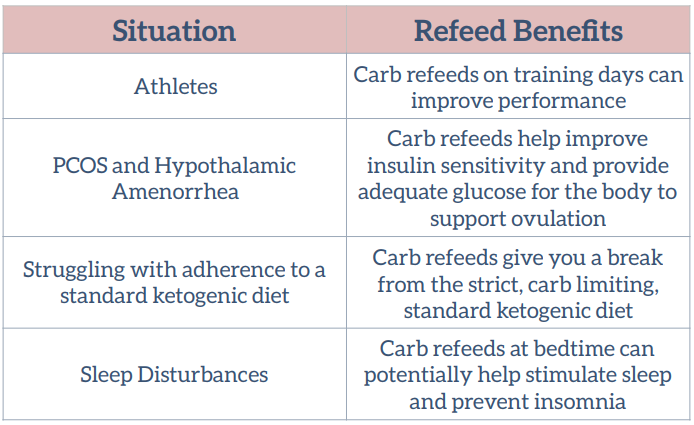
In Conclusion
The ketogenic diet can be a critical tool in treating and managing certain conditions.
However, today’s current keto craze may be more hype than actual science.
For the average person, the drastic metabolic changes that occur during the switch into ketosis are not necessary in order to achieve optimal health.
And for some, these dramatic changes can even cause more health issues than before.
Many people can see similar health benefits from a ketogenic diet in one that’s not as strict in the restriction of carbohydrates.
With that being said, I’m not completely against the ketogenic diet. I believe that when done properly, and including carb refeeds when appropriate, it can provide some great health benefits.
I would, however, recommend you only attempt the switch to ketosis under the guidance of a trusted healthcare professional, like myself.
If you’re interested to see if making the switch to a ketogenic diet might be right for your health situation, book your strategy session, here. From there we’ll work on getting to the root cause of your health issues together!
Now it’s your turn! Do you have any experience with a ketogenic diet? Were you able to use it to meet your goals, or did it not work well for your body? Let me know in the comments below!
This post may contain affiliate links. If you click on a link and make a purchase, I may receive a small commission.
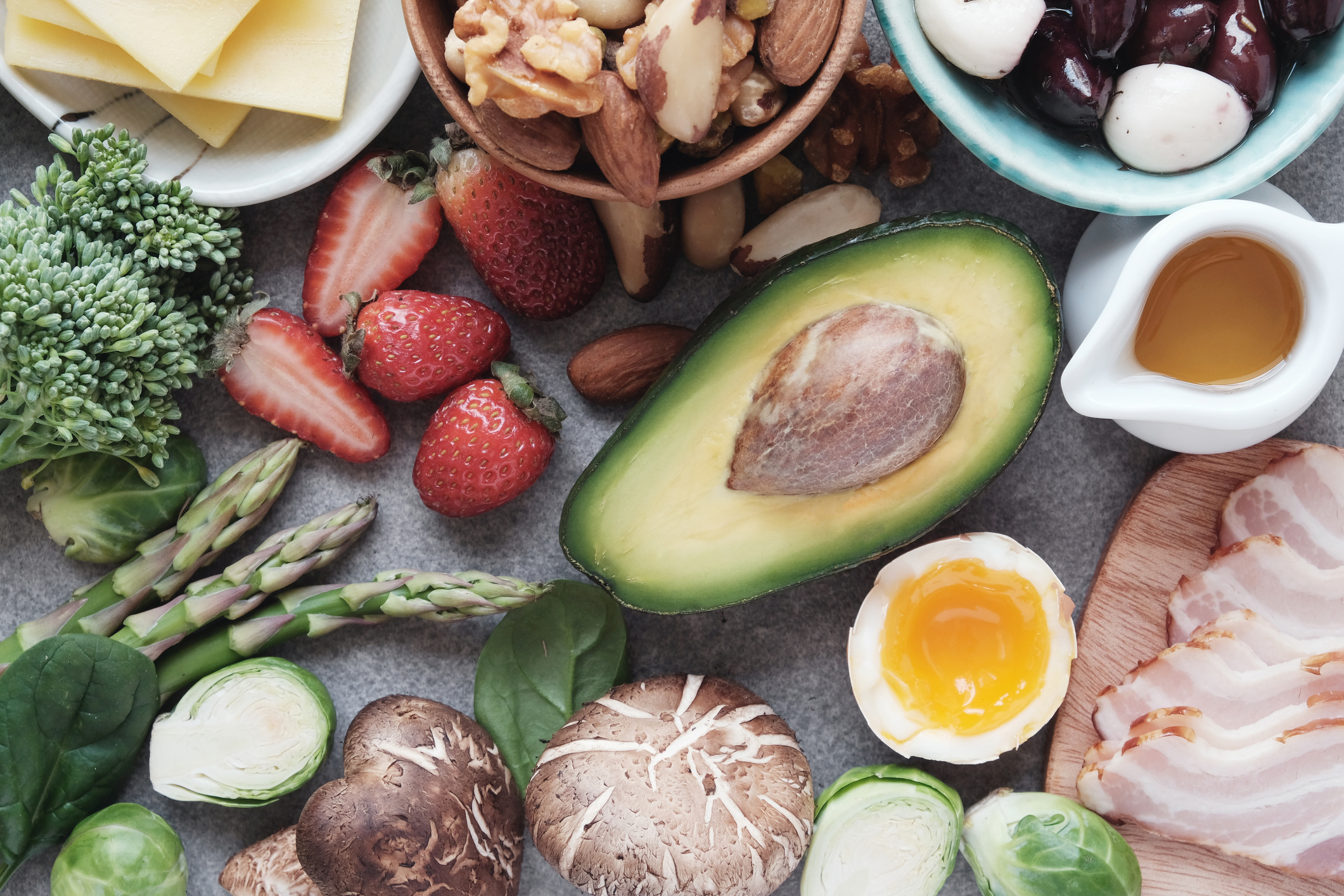
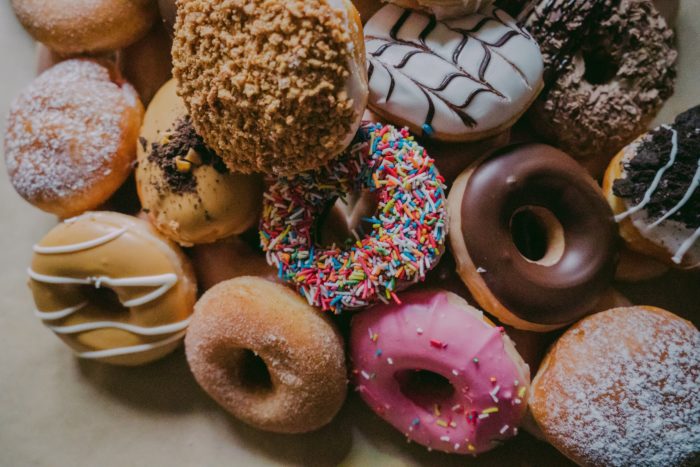
+ show Comments
- Hide Comments
add a comment